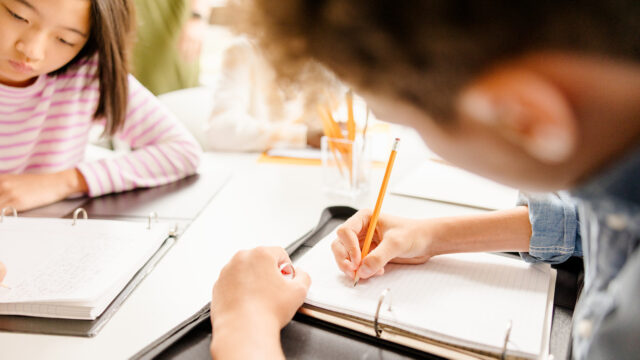
Empower your child to sharpen their multiplication, division, and measurement skills, and better understand decimals and fractions, with these instructional resources ideal for at-home learning.
Activity 1: Food in space
Multiplication and division are used every day in real-world situations.
Astronauts on a space shuttle must carry with them all the food and water they need while in space. People who plan the missions use multiplication to calculate how many pounds or gallons of different supplies the astronauts will need.
Space exploration would not be possible without an understanding of place value and operations with whole numbers.
Materials needed
Use these important facts below to complete the lesson:
- Length of trip to Mars: 6 months
- Length of stay on Mars: 6 months
- Length of return trip to Earth: 6 months
- Number of astronauts: 6
- 2 cups of water weigh 1 pound
- 1 month equals about 30 days (on average)
- Each astronaut needs 10 cups of water and 4 pounds of food each day.
Check answers against the answer sheet.
Extend the project
Want to learn more?
Read about Apollo 11, the first manned mission to the moon. Learn about the primary mission of the flight and the members of the crew.
Activity 2: The black-footed ferret
This project connects measurement and numbers to the study of wildlife. Wildlife biologists use a variety of math skills as they study and report on animals such as ferrets.
Overview
The black-footed ferret is one of the most endangered mammals in North America.
By 1986, black-footed ferrets were nearly extinct. Since then, the U.S. Fish and Wildlife Service has been working to increase the black-footed ferret population by breeding them in captivity and then reintroducing them into the wild.
Think about
- What does a wildlife biologist do?
- What math skills does a wildlife biologist use when working with ferrets?
Materials needed
Check answers against the teacher guide.
Extend the project
Research black-footed ferrets to learn more about the number of species of ferrets, their habitats, and their importance to the ecosystem.
Activity 3: Fundraiser
This project connects the understanding of fractions, and operations with fractions, to adapting a recipe for a bake-sale fundraising project. Bakers and merchants use a variety of math skills to bake, to organize their time, and to sell goods.
Overview
Recipes for baked goods in the United States often show the amount of ingredients needed using customary measurement units such as cup and teaspoon, or fractions of a cup or teaspoon. These are measures of volume, or how much a container can hold. A cup of flour, for example, is the amount of flour that a cup measure can hold. Fractions of the cup unit, or fractions of the teaspoon unit, involve a part of the whole unit. For example, 1/2 of a cup stands for 1 of 2 equal parts of a cup.
Think about
- What do you need to plan when you organize a fundraiser?
- If you were a baker, how might you use fractions and operations?
Materials needed
Check your answers with the answer sheet.
Extend the project
Want to learn more? Research other fractions used in measurements—for example, measuring lengths for sewing or for distances—and answer these questions:
- What fractions of a yard are used to measure fabric?
- What fractions of a mile are used to measure distances from one place to another?
***
Find more math activities for Grades 3-5.
This blog, originally published in 2020, has been updated for 2025.
Be the first to read the latest from Shaped.












